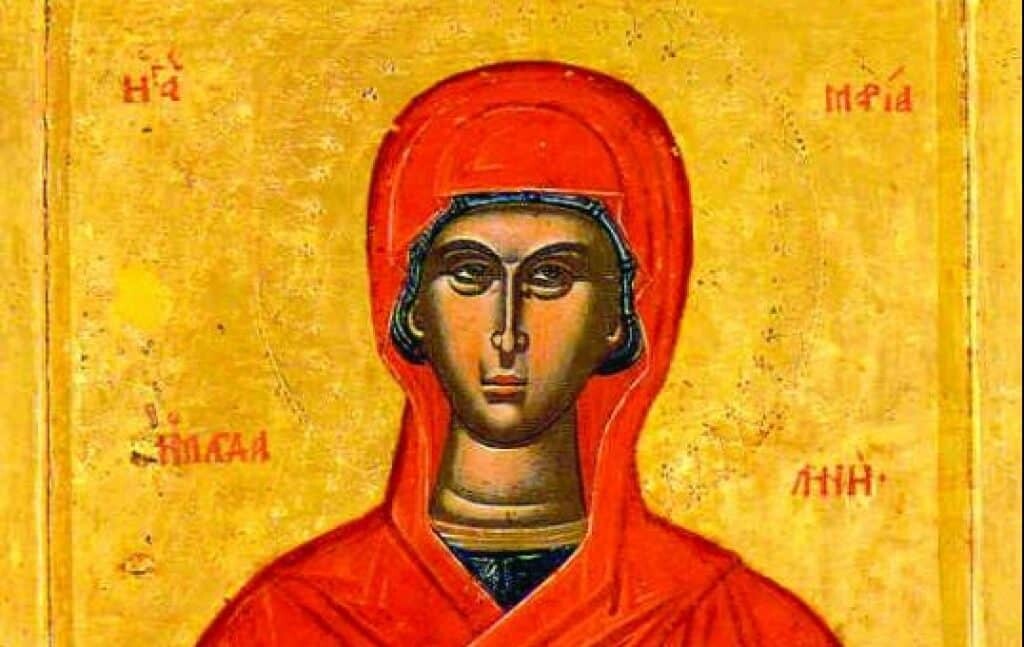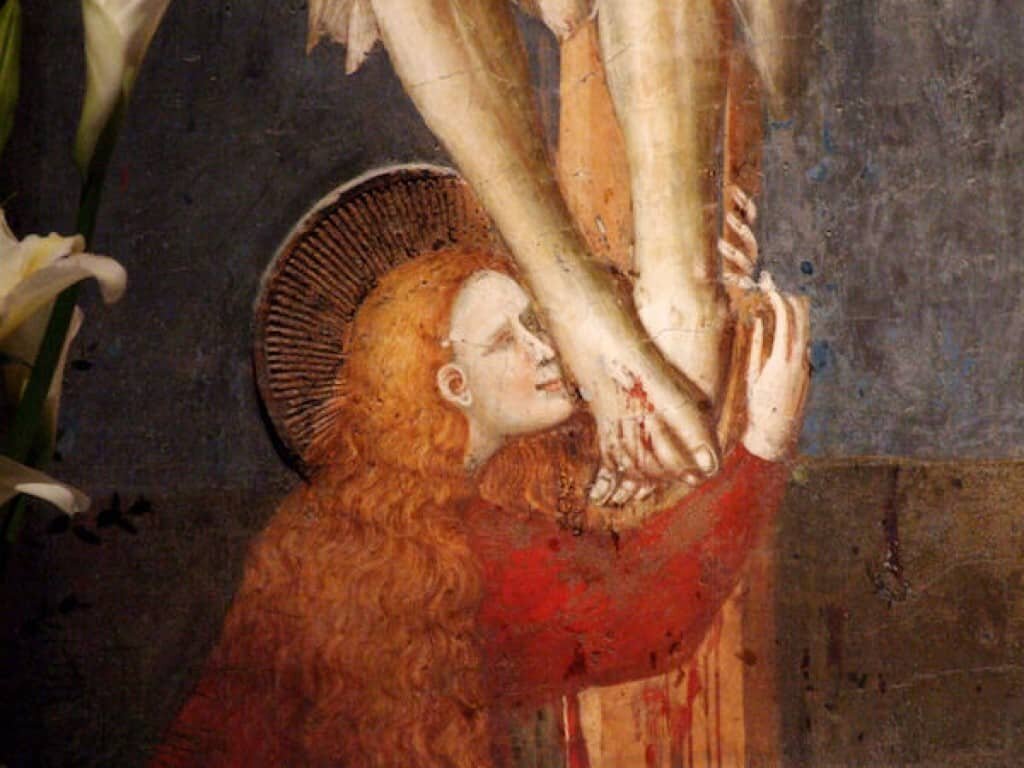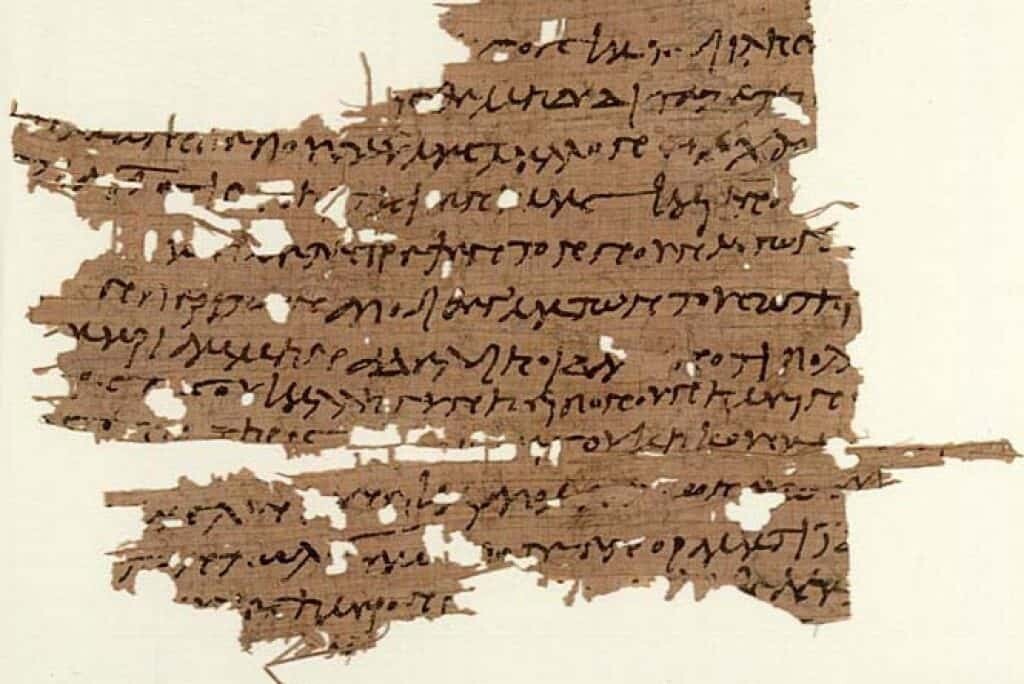Easter is a highly significant time of year for Christians. The crucifixion and resurrection of Jesus are easily the most pivotal moments contained in the Bible. It is during this whole episode that one of history’s most misunderstood women came to prominence. Mary Magdalene was not mentioned much in any official gospel before these fateful times. However, when she was, it was often in a negative light. Perhaps her most famous moment was when she anointed Jesus’ feet with her hair. Nonetheless, Mary is a recorded witness of the crucifixion, the discovery of the empty tomb, and the resurrection. To be there at all three events is a strong indication that she was more than a woman who has fallen from grace. Perhaps much more according to the Gospel of Mary.

Recent Theories About Mary Magdalene
Of course in more recent times, Mary Magdalene has been described as much more than just another disciple or follower of Jesus Christ. The Da Vinci Code and its follow-up tells how Mary was the mother of the child of Jesus Christ. Additionally, the story indicates that the real Holy Grail is the subsequent bloodline or lineage descended from this one infant. The opinion is strongly divided over whether this is true or not.
We seem to know quite a few facts about Mary Magdalene.
- Her true identity is more likely to be Mary of Magdala. This town can still be found about 120 miles north of Jerusalem on the Sea of Galilee and was predominantly a fishing community.
- There is a very good chance that during her formative years, Mary made a living from this – likely as a market stall holder or trader.
- Mary’s age, status, and family might not be readily known, but other facts are.
- It is likely that Mary never married or gave birth before her rise from obscurity.
Under the Roman Occupation of the time, burdens were high on many families and households. Unfair taxation might have led to some children being sold into slavery and other forms of human trafficking taking place. Under these conditions, one can understand how society might depict Mary as a prostitute. Nothing written in the New Testament confirms this, though.

An Important Discovery
At the end of the Second World War, a discovery in the Southern Egyptian town of Nag Hammadi caused a sensation. It wasn’t as momentous as the Dead Sea Scrolls, but it was an important find nonetheless. Two men came across sealed clay pots containing ancient papyri that painted Mary of Magdala in a whole new light. The Gospels of Philip and Thomas, along with the Acts of Peter, tell a lot about early Christianity. These were written in the early Christian language of Coptic. While these texts were incomplete, they do provide additional detail to the accepted versions of current biblical tales. One example outlines additions to the Gospel accounts of Jesus reappearing to the Apostles after his resurrection. The canonical gospel does not mention what was said, where these so-called Apocryphal Gospels do.
The Oxyrhynchus Papyri: Historic Treasure in Ancient Egyptian Trash
When was Jesus Born and What was His True Age at Death?
Mary the Student
The Gospel of Philip is particularly revolutionary in its take of the whole relationship between teacher and follower. These accounts spend a lot of time and effort revealing that Mary was one of the more committed disciples. She supposedly asked many intelligent questions and was among the most knowledgeable of the entire group. But it was one comment that has divided everyone since its discovery. Philip mentioned a kiss between Jesus and Mary. Fate took away the most crucial and necessary part of that account which has left many to speculate what precisely happened.
The Kiss
[blockquote align=”none” author=”Gospel of Philip”]And the companion of the […] Mary Magdalene. […] loved her more than all the disciples, and used to kiss her often on her […]. The rest of the disciples […]. They said to him “Why do you love her more than all of us?” The Savior answered and said to them, “Why do I not love you like her? When a blind man and one who sees are both together in darkness, they are no different from one another. When the light comes, then he who sees will see the light, and he who is blind will remain in darkness.[/blockquote]
This is the entire basis behind The Da Vinci Code. From this, attention switched to the Last Supper painting and eventually to Roslyn Chapel in Scotland.

If we are to believe the Gospel of Philip, at least in terms of Mary’s ability to grasp the teachings of Jesus, then perhaps another discovery from a Cairo bazaar in 1896 might prove to be genuine as well. A German tourist discovered the leather book and quickly realized its significance. The text of this publication was also in Coptic and supported an entirely new regard for the disgraceful woman.
The Gospel of Mary
What was on sale was the Gospel of Mary. This account begins after the resurrection took place and after Jesus appeared before his disciples in a vision. In short, Mary actively encouraged all of the disciples to continue the work started by Jesus. However, they are understandably reluctant to do so due to the potential ramifications. Mary talks them into continuing the teachings and not allowing their fears of death to dominate their actions. Even using this abridged version of the story as a guide, it does seem as though Mary was not just another disciple or follower. She was something much more of an equal to Jesus himself.
This does create another problem. Peter offers the opinion that what is actually happening is some sort of power struggle between Jesus and Mary. Peter challenged her to provide details on something that only she would have known but the other disciples had not. When Mary agrees and tells of a tale about spiritual development, Andrew isn’t convinced and sides with Peter. Matthew attempts to end the discord among the followers. He puts faith in the idea that Mary was not a rival for leadership of the group or a more trusted confidante to Jesus as Peter might have been led to believe. For the formulation of such an idea, the group must have seen Mary as more than an apostle as a whole.
The Importance of Mary
Could this mean that she was, in fact, everything the Da Vinci Code says that she was? The Gospel of Mary does seem to intimate that Mary had a more vital role within the disciples than just another of their number. Mary may very well have been an additional teacher of the Word or even a spiritual influence upon the group as an entity. The Apostle’s Apostle.
When the Bible was being edited, perhaps The Gospel of Mary was excluded for this very reason. The Church was basically founded on the words of Peter, installing him as their very first Pope while Mary had been relegated to nothing more than a bit-part player in events with nothing but a cameo appearance in one part of the life of Jesus.
Sources
BBC Religion
The Nazarene Way
New World Encyclopedia
Women in the Bible
Women in the Bible
Sites pulled: 21 March 2016